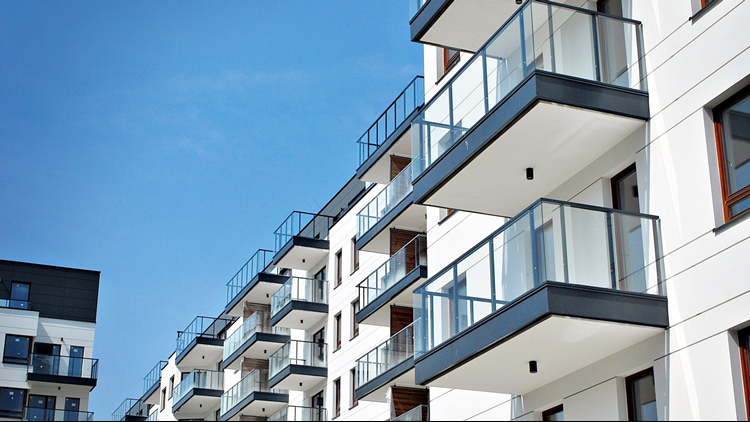
While other Canadian cities saw significantly steeper price changes during that timeframe – notably Laval, Que. with 20.1 per cent and Calgary, Alta. with 21.6 per cent – Brampton dwarfed the country with rents soaring by 29 per cent for one-bedrooms. Two-bedroom rents also increased by 25.7 per cent for the GTA city.
null
Even though Ontario capped rent increases at 2.5 per cent in 2023 (and is continuing to do the same for 2024), the limit only pertains to buildings constructed before Nov. 15, 2018. The Doug Ford government scrapped rent control for newer units as a way to incentivize developers and boost Ontario’s housing supply, which can result to double-digit rent increases.
The report also shows Brampton boasts some of the most costly rental prices, as it is among the top five most expensive in the country for one-bedroom units at $2,274 per month – though still $346 less each month than what it costs in Toronto. The rental cost of an average two-bedroom unit in Brampton is also significantly cheaper than in Toronto, going for $763 less at $2,650 per month.
Even though Toronto and Mississauga have higher living costs than Brampton, the cities saw rent increases ranging from roughly 10 to 15 per cent.

So, what is driving up Brampton’s rent so much faster than everywhere else?
Broker and co-owner of Re/Max Realty Services, Gurinder Sandhu, who oversees four offices throughout Peel Region, told CTV News Toronto Thursday a few reasons are contributing to increasing prices.
“Brampton is the hub of where new immigrants go for a number of reasons,” Sandhu said. “There’s a lot of entry level jobs and manufacturing and distribution. There’s also Sheridan College there that a fair number of students coming into Canada with student visas head to as a destination, so there’s a lot of demand.”
According to the latest census by Statistics Canada in 2021, Brampton had the third largest immigrant population in the province and ranked fifth across Canada. Roughly 21 per cent of Brampton’s population comprises non-Canadian citizens, according to the census, with more than half of the city being born outside of Canada.
Last year, Canada welcomed a record number of immigrants, and the country is hoping to hit a target of 500,000 by 2025.
“Brampton has always been one of those kind of suburban communities where the affordability, whether it was a rental or purchase, was a lot better than the core of the city (of Toronto). We’re ever-increasing our population so now Brampton’s almost becoming part of the city,” Sandhu said.
Outside of what Brampton offers newcomers, Sandhu pointed to the province’s affordable housing crisis as another driver ballooning Brampton’s rental prices.
“With the increase in mortgage rates – the hyper increase in mortgage rates since March of 2022 – we’re seeing people who could possibly afford monthly payments on purchases I guess a year and a half ago can no longer get into the home that they wanted in this part of the city,” Sandu said.
In May, the Region of Peel revealed the region is only meeting roughly 19 per cent of its affordable housing needs – meaning it is serving fewer than one in five households. The region says it estimates it could take up to $50 billion over the next decade to fully meet its affordable housing needs, with an additional $4 billion just to maintain the same levels currently being met.
null
Sandhu recommends signing on with others to crack into Brampton’s market, whether prospective residents are seeking a place to rent or buy.
“I think we’re getting into that point where in our city co-ownership, or co-rentalship is probably going to be the norm if the rental rates continue to increase at the rate that they are now,” Sandhu said.
To prevent landlords and property managers from creating illegal rental units to house more residents than what is allowed in a home, the City of Brampton previously announced in March it would pilot a program sometime early 2024. The program would cap the number of residents, create a system for random inspections and fines for unlicensed rentals, as well as explore establishing a Landlord Code of Conduct.
A final plan for the pilot program is expected to be announced sometime this year, and would apply to select wards in Brampton with higher volumes of rental units.
Sandhu says, however, that a long-term plan needs to be sorted by all levels of government and developers to provide affordable accommodations.
“The reason there is so much immigration is because everybody around the world recognizes the world-class city that (Brampton has) become,” Sandhu said.
“There’s even a greater impetus required for our government to really figure this out… Otherwise, increasing at the rates that we’re increasing, the rates that we’re seeing are not going to be sustainable, and that will create much bigger problems than we see right now.”
#Thetorontohouse #ovieoftoronto#thetorontohousecanada



